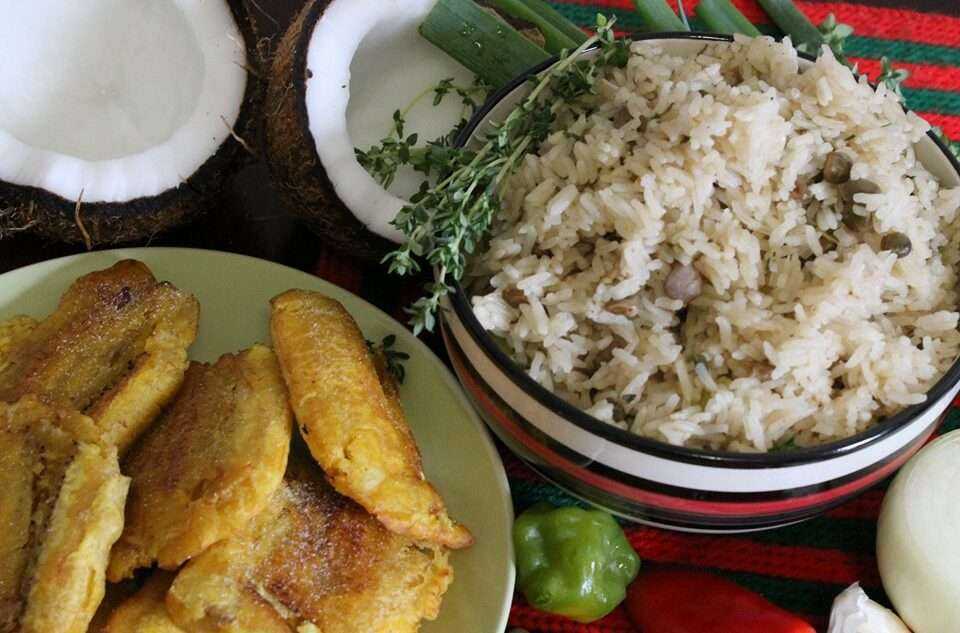BY NOEL CUNNINGHAM
Rice is a staple food throughout the Caribbean, and each island has a particular rice dish. On some islands, rice is seasoned or served with coconut. Yellow and brown rice is served as a side on many Caribbean dishes. In addition to rice, beans are a favourite food throughout the Caribbean. Food served in the Caribbean islands has been influenced by the cultures of the world, but each island adds its unique flavour and culinary techniques. Caribbean culinary is most famous because of its many influences from many staple foods of the world. One-pot meals was passed down from our African brothers and sisters. This style of cooking was created to use what they have so they would combine it to feed as many people as possible. Popular Caribbean rice dishes include rice and peas, pelau and Jamaican seasoned rice.
Rice is not native to the Americas but was introduced to Latin America and the Caribbean by European colonizers at an early date with Spanish colonizers introducing Asian rice to Mexico in the 1520s at Veracruz and the Portuguese and their African slaves introducing it at about the same time to Colonial Brazil. Enslaved Africans played an active role in the establishment of rice in the New World and that African rice was an important crop from an early period. Varieties of rice and bean dishes that were a staple dish along the peoples of West Africa remained a staple among their descendants subjected to slavery in the Spanish New World colonies, Brazil and elsewhere in the Americas.
Rice and peas are the mainstay of the cuisines of The Bahamas, Jamaica, Trinidad and Tobago, Barbados, and many other English-speaking Caribbean islands. In the Bahamas, it is known as peas n’ rice, from which the Bahamian folk song “Mamma don’t want no Peas n’ Rice and Coconut Oil” is named.
Like many other rice dishes, pelau is one of those dishes that really exemplifies Trinidadian cuisine because it is an admixture of various cooking styles. Pelau, or rice cooked with meats and vegetables, is a variation of East Indian pilau, which originated in Persia where it is called polow. The Anglicized version of the dish is called pilaf. The process of browning the meat in sugar for pelau is an African tradition that came to the Caribbean.
Jamaican Seasoned Rice
The Jamaican seasoned rice is somewhat similar to the popular pelau of Trinidad except for the use of ackee and saltfish in the Jamaica rice. The technique is also similar.
Ingredients
- 1 lb. chicken thighs, chopped
- 1 (15 oz.) can ackee, drained
- 4 oz. saltfish, cooked
- 2 cups rice, (long-grain) rinsed
- 2 tablespoons coconut oil
- 1 medium onion, finely chopped
- 3 cloves garlic, minced
- 1 green onion
- 2 sprigs of fresh thyme
- 1/4 teaspoon ground allspice, or 6 berries
- 1 medium carrot, diced
- 1 cup pumpkin, peeled and diced
- 1 cups coconut milk
- 2 cups water
- 1 green scotch bonnet pepper
- salt, to taste
Directions:
Heat oil in a large pot on medium-high heat then add chicken pieces to brown for roughly 10 minutes. Add onion, garlic, green onions, thyme, and allspice. Cook stirring constantly until onion is soft, about 3 minutes. Add carrot, pumpkin, ackee, saltfish, rice and stir to combine. Add coconut milk, water, and scotch bonnet pepper. season with salt to taste. It should actually have enough salt that when you taste it, it should taste how you want the finished rice to taste because the rice will absorb some of the flavours as it swells. Cover pot and bring to a boil, reduce heat to simmer for 30 minutes.
cover the pot and cook for 5-10 minutes or until rice is tender. Fluff with a fork.

